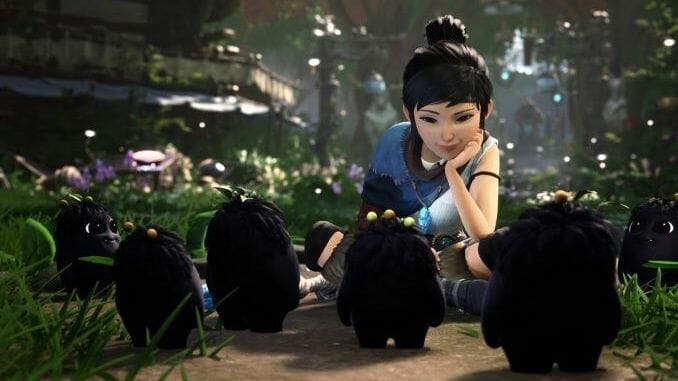Like Dia de Muertos, Kena: Bridge of Spirits Knows There’s More to Death than Grief

I have a funny relationship with death. Because of my anxiety it’s something I think about too often, and because of my culture it’s something I celebrate once a year in a way that I don’t think a lot of people understand. Death is ever present, and often stories in media are about how grief manipulates us, pushes us, or is used as a weapon against us. Most recently, Marvel’s Guardians of the Galaxy explored this concept and used grief almost as its antagonist. But death and how we cope with it don’t have to be negative. That’s where Kena: Bridge of Spirits comes in.
I played Kena at launch and the concept immediately made a big impact on me. If you’re unfamiliar, Kena is a spirit guide. Picking up her father’s legacy, she is tasked with ensuring that the spirits of the dead reach peace. In a way, she is working to free spirits of their grief, of their guilt, and ultimately help them reach acceptance. Kena is a steward of the spirits just as much as she is of the land, purifying it of its corruption.
As we play we discover familial bonds and familial regret. But the most beautiful thing about Kena: Bridge of Spirits is how it doesn’t view death through the kind of dark and grim lens that we see so often. Instead, the world in the game is lush and vibrant. Whether it’s the adorable companions called Rot or the even cuter spirits you help named Saiya and Beni, there isn’t anything terrifying about the game. Even the corruption in the world you must purify has a whimsical beauty to it.
There is a vibrancy to the game that immediately felt like home and a positivity around death rarely found in media from the United States. In fact, the game started to get me thinking about Dia de Muertos.
As a spirit guide, Kena isn’t trying to stop death, she’s trying to complete the cycle. In this case, one of the games’ key narrative elements revolves around helping a spirit named Taro move on from his trauma. Over the course of the game, you collect items that hold Taro’s memories and put his story into perspective. While fighting the corruption is important to saving Taro, helping him remember who he is, and connecting him with his siblings Saiya and Beni, is the key. And as I collected the relics attached to his memories I thought about all the things I put on my offrenda. I thought about the can of Dr. Pepper I put on the offrenda that was my wela’s favorite drink and about the rose we always place that reminds us of our times in her garden. I was thinking about the chess pieces that hold the memories of hours spent with my welo playing the game. But more importantly, I think about how even in death, those memories keep them alive, and how I’m protecting them, the same way Kena does.
In all transparency grief and I have been living side by side since the start of the pandemic. Before the pandemic I still had grandparents. Now, I don’t. Before the pandemic, I had more tios than I do now. Before the pandemic I had more people in my life that existed as more than just memories. And now, memories are all I have. But those memories have turned into scars that just don’t go away. The grief grows and spreads like a rot needing to be purified. But for a year, my only way to tend to my grief was gone.